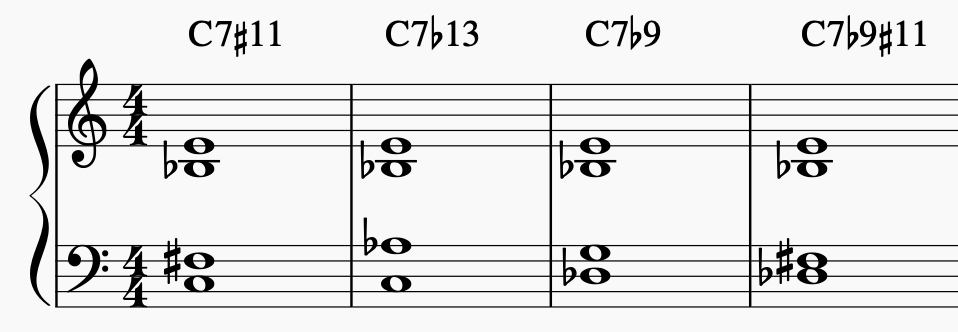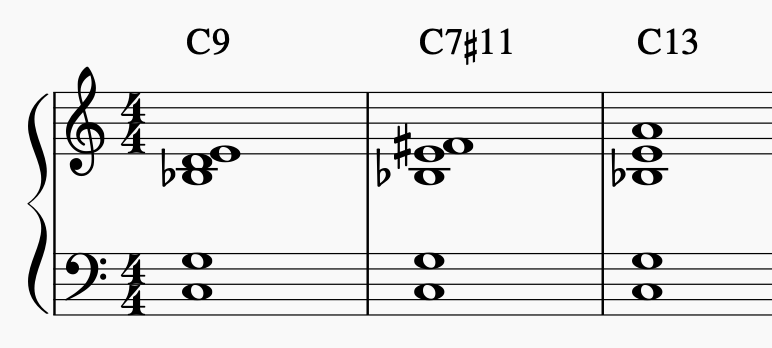The Pippinpotato Corner All things pippin and potato
4 Note Comping System
3 minute read

This is a comping system that allows you to create a large variety of very flexible and simple to construct 4 note voicings.
The System
The comping system divides the 4 notes into two groups: shell, root and fifth.
Shell is the 3rd and 7th degrees and this is what defines the quality of the chord; it tells you whether it is major, minor, or dominant. The root and fifth provide structure to the chord.
The basis of this system is that you play the shell in one hand and the root and fifth in the other hand. You can decide on the spot the order in which you stack the notes in each hand, which hand you play them in, and which register on the piano you play them.
Look at a sample voicing of C7 derived from this system below: the shell is in the right hand and the root and fifth in the left hand.

Here is a sample of me comping with this system.
Extensions and Alterations
Just playing the root and fifth with the shell might start to sound boring after a while, so you would want to add extensions and alterations. This is pretty easy with this system as well. You can easily move the root up to play the b9, 9, or #9, and you can move the fifth around to play the 11, #11, b13, or 13. Without much variation to the voicing system you can add these extensions and alterations.
This is more difficult and will take some more practice, but it adds a lot of nice tension to your playing.
Here are some examples of altering the C7 voicing above. As you can see, making alterations just takes one or two note shifts up or down a half step or whole step.

Here is a sample of me comping with extensions and alterations included. You can hear there is a lot more added tension and colors. If you comped this way with a bass providing a bassline, you’d be able to hear the different colors even more.
5 Note Comping System
You can extend this system to create 5 note voicings as well. In a previous article I covered left hand 3 note voicings. You’ll notice that these left hand 3 note voicings are just the shell with an added note. Therefore, you can implement these 3 note voicings in this 4 note comping system; instead of playing shell + root and 5th, you can play 3 note voicing + root and 5th, and you end up with a 5 note comping system. You can also continue to mix up which hand you choose to play them in; these left hand 3 note voicings are not actually restricted to the just left hand.

Final Note
This system is a good way to get play flexible two handed voicings that span multiple octaves. By practicing this voicing system you are also practicing locating the shell, root, and fifth for each key along multiple octaves of the piano. This is an essential skill that you should be well versed in for jazz piano.
Written on August 18th, 2020 by Chris Cheung